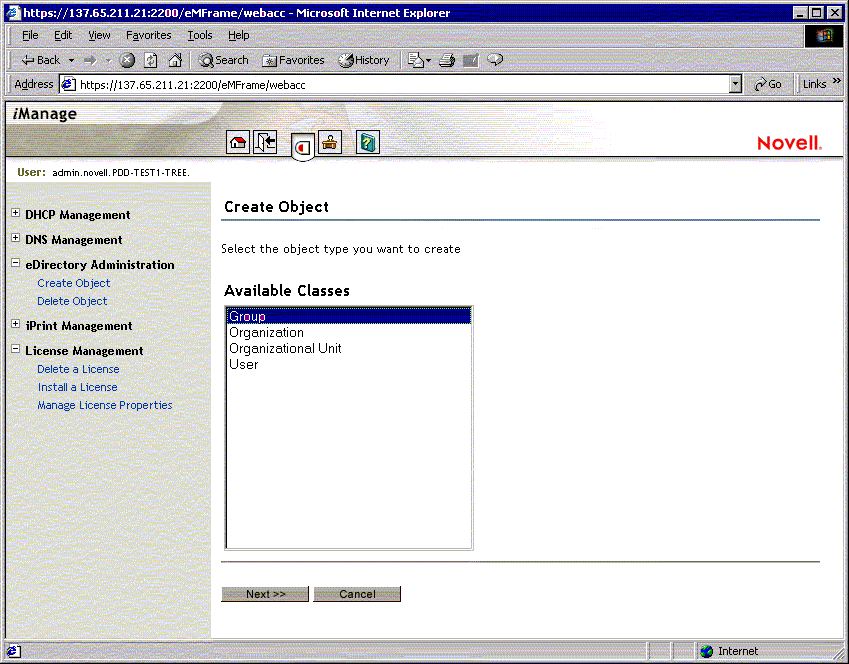Configuring Role Based Services
Novell® iManager gives you the ability to assign specific tasks or responsibilities to users and to present the user with only the tools (with the accompanying rights) necessary to performs those sets of tasks.
Role Based Services (RBS) gives you a way to focus the user on a specified set of tasks and objects as determined by their roles. What users see when they access Novell iManager is based on their role assignments in Novell eDirectoryTM. Only the tasks assigned to that user are displayed. The user does not need to browse the tree to find an object to administer; the plug-in for that task presents the necessary tools and interface to perform the task.
You can assign multiple roles to a single user. You can also assign the same role to multiple users.
When a user accesses Novell iManager and successfully logs in, the following page is displayed:

On the left, a list of available roles and tasks that the user has access to is displayed. As the user selects a task on the left, the tools necessary to execute the task are displayed on the right.

NOTE: The roles and tasks will vary depending on the tree and the user.
Role Based Services is represented by objects defined in eDirectory. The base eDirectory schema has been extended to accommodate this information. The new object types are listed in the following table:
 rbsCollection rbsCollection
|
A container object that holds all RBS role and task objects. |
 rbsRole rbsRole
|
Specifies the tasks that users (members) are authorized to perform. Defining a role includes creating an rbsRole object and specifying the tasks that the role can perform. rbsRoles can only be created in an rbsCollection container. |
 rbsTask rbsTask
|
Represents a specific function, such as resetting login passwords. rbsTask objects are located only in rbsModule containers. |
rbsScope |
Represents the context in the tree where a role will be performed, and is associated with rbsRole objects. This object is dynamically created when needed, then automatically deleted when no longer needed. WARNING: You should never change the configuration of an rbsScope object. Doing so will have serious consequences and could possibly break the system. |
 rbsModule rbsModule
|
Holds rbsTask objects. |
In This Chapter
Previous | Next
 rbsCollection
rbsCollection rbsRole
rbsRole rbsTask
rbsTask rbsModule
rbsModule
